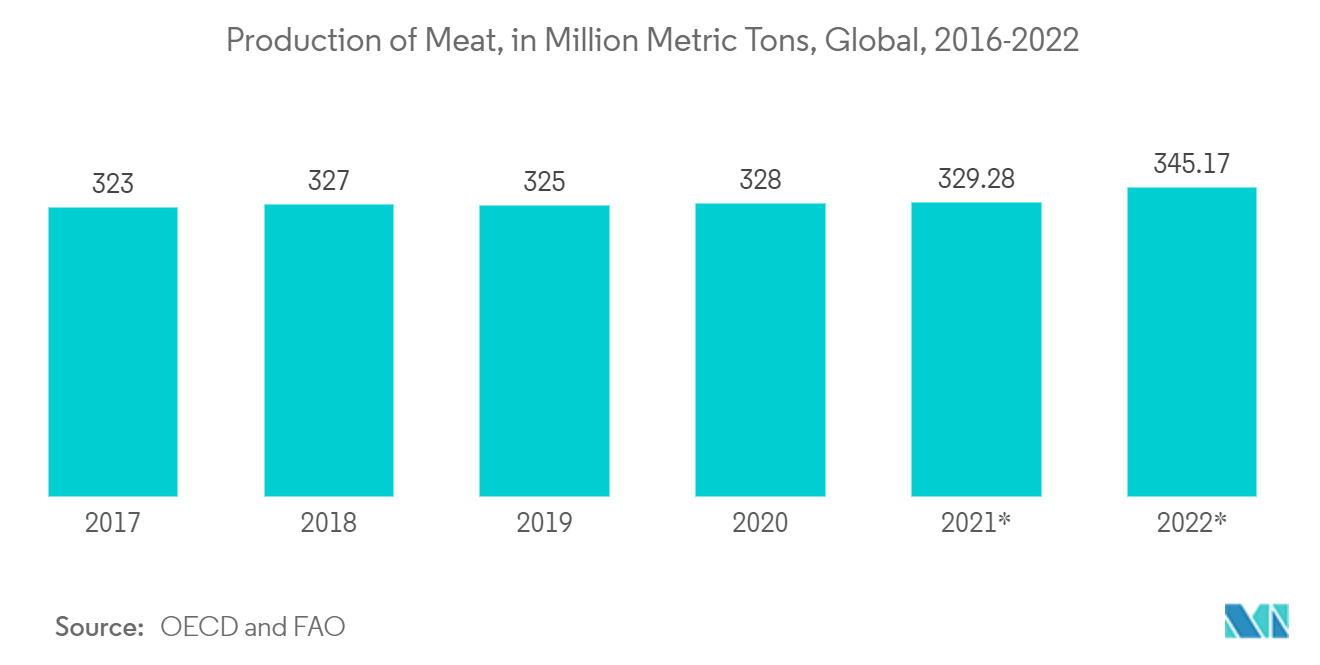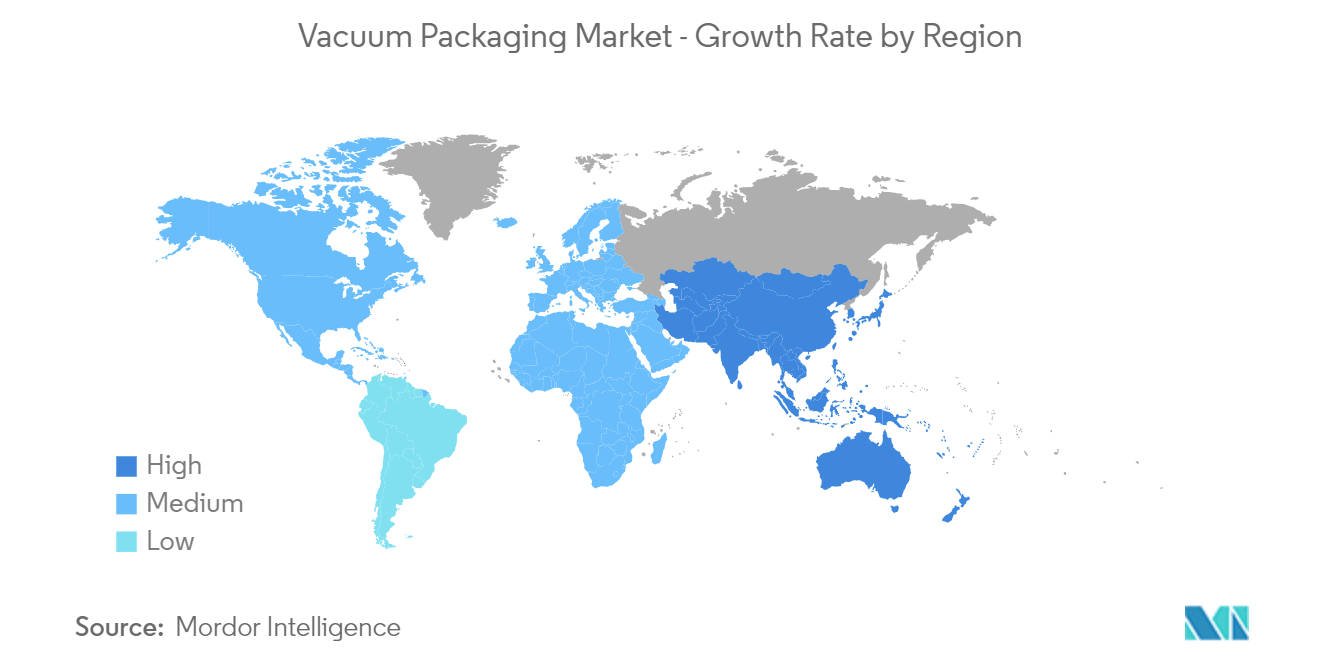Market Trends of Vacuum Packaging Industry
Food Segment is Expected to Hold Significant Market Share
- The food segment is expected to be a significant and dominant sector within the vacuum packaging market. By removing air and sealing the package, vacuum packaging helps inhibit the growth of spoilage-causing bacteria and extends the shelf life of perishable items. It helps maintain food's taste, texture, and nutritional value, making it a preferred choice for many food manufacturers.
- Vacuum packaging is used across various food categories, including fresh produce, meat and poultry, seafood, dairy products, bakery items, ready-to-eat meals, and more. It is suitable for raw and cooked foods, allowing for packaging a diverse range of products. Vacuum-sealed packages protect against external contaminants, such as air, moisture, and odors, which helps maintain the quality and safety of packaged food.
- Vacuum packaging is widely used in the meat industry to extend the shelf life of products, maintain freshness, and prevent spoilage. The vacuum-sealed packages help preserve the meat's color, flavor, and texture, making it an appealing choice for consumers. According to OECD and FAO, between 2016 and 2022, meat production volume increased from 317 million metric tons to about 345 million metric tons.
- Vacuum packaging contributes to food safety by minimizing the risk of bacterial growth and contamination. Removing the air and sealing the package creates a barrier against external pathogens, making it reliable for maintaining food safety and hygiene. This is especially important for perishable and easily spoiled food items.
- Vacuum packaging significantly extends the shelf life of food products, reducing food waste and improving sustainability. By reducing exposure to oxygen, vacuum-sealed packages slow down the natural deterioration processes, including spoilage, discoloration, and texture changes. These benefits manufacturers and retailers by reducing product losses and addressing the global issue of food waste.

North America is Expected to Hold a Significant Market Share
- The North American vacuum packaging market is driven by the dominant food industry, technological advancements, a focus on sustainability, and the need for reliable packaging solutions in the healthcare and pharmaceutical sectors. As consumer preferences and regulatory requirements evolve, the market is expected to witness further growth and innovation in the coming years.
- The region's busy lifestyles, changing consumer preferences, and the growing demand for convenience foods have fueled the need for effective packaging solutions like vacuum packaging. The industry also strongly emphasizes food safety and quality, driving the adoption of vacuum packaging to protect and preserve food products.
- North America is known for its technological advancements and innovations in packaging. Manufacturers in the region have introduced advanced vacuum packaging technologies that help enhance product preservation, improve shelf life, and address specific packaging requirements.
- In recent years, there has been an increased focus on sustainable packaging practices in North America, driven by environmental concerns and changing consumer preferences. This has led to the development of eco-friendly vacuum packaging solutions, such as recyclable films and materials. Manufacturers are actively working towards reducing the environmental impact of packaging, including vacuum packaging, by adopting sustainable practices and materials.

